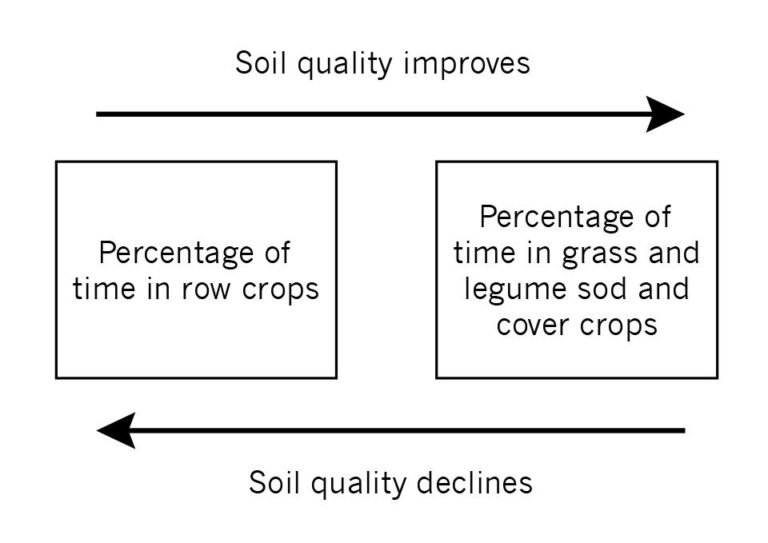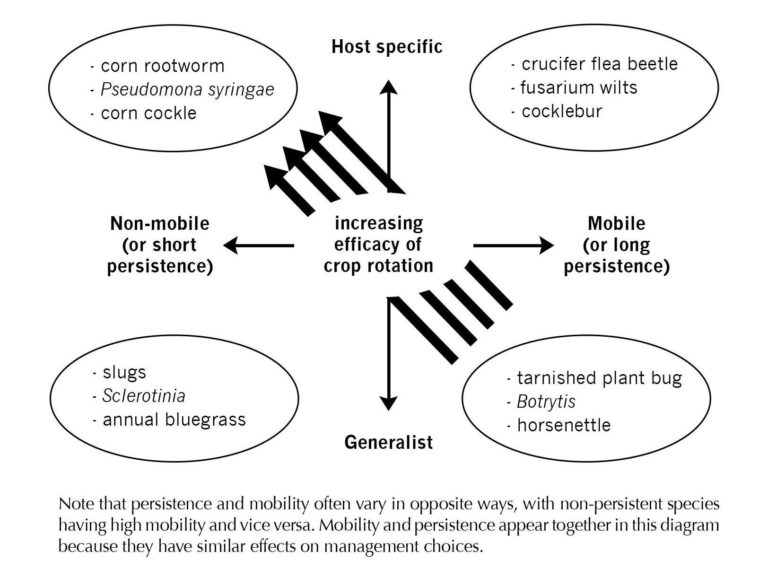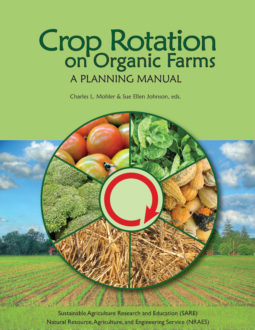
This chapter is about the ways biologists and soil scientists view crop rotation. Unlike the farmer experts of the previous chapter, who approach rotation as a holistic process, the scientists are specialists who delve deeply into particular aspects of organic production. They study in detail how crop rotation affects a particular aspect of the farm system. Through extensive reading and discussion with others, expert farmers come to understand and practice most of the principles presented here. Understanding the concepts presented in this chapter can help resolve newly encountered problems and aid the development of a rotation plan.
Researchers have studied crop rotation since the beginnings of agricultural science, in the early nineteenth century. More recently, scientists have taken a renewed interest in crop rotation due to increasing problems associated with continuous cropping of single species. In the past ten years, researchers have begun to look at crop rotation on organic farms. Studying multiyear crop sequences, however, requires extraordinary patience and a source of funding that lasts longer than typical government grants. Consequently, most studies have compared a two- or three-year rotation with continuous cropping. Since the organic farming community is already aware of the problems of continuous cropping, such studies often provide few data with any relevance to organic farmers. Nevertheless, some relevant studies do exist, and much can be inferred from work that did not explicitly compare different crop rotations.
The biological and physical benefits of crop rotation fall into two general, interrelated categories: improvement of soil quality and management of pests. Certain broad patterns appear in each of these.
Soil quality tends to improve with the percentage of time the land is in grass and legume sod and cover crops (figure 3.1). Legumes used as green manures supply nitrogen for succeeding crops. Many legumes also have deep taproots that loosen the subsoil and recycle leached nutrients back into the plowed horizon. Grasses produce dense systems of fine roots that secrete substances that foster aggregation of the soil into stable crumbs. Moreover, their roots decay slowly through various forms of soil organic matter that further tend to stabilize soil aggregates and supply a slow release of nutrients for crop growth. Conversely, row crops tend to have opposite effects on soil, due to (1) the relatively low average density of roots per square foot and (2) the presence of bare soil between the rows that is exposed to the impact of traffic and raindrops. Many factors can modify these contrasting trends, including the type and frequency of tillage and the degree to which the farmer uses soil amendments like compost, organic mulches, and rock powders. Nevertheless, the contrast between grass and legume sod and cover crops versus row crops makes a good starting point for understanding the relationship between crop rotation and soil quality.

Although crop rotation is a key component in the management of diseases, weeds, and many types of animal pests, it is not a panacea. Many pest problems cannot be managed by crop rotation alone, and some problems cannot be addressed by crop rotation at all. A key factor that governs the ability of crop rotation to manage pests is the host specificity of the pest (figure 3.2). Host-specific pests specialize on a particular species or family of crops, whereas generalist pests damage a wide range of crops. Additional key factors are the mobility of the pest and the persistence of dormant pest life stages (eggs, seeds, spores). Highly generalist pests can persist in the field through a variety of crops, and a grower must use management techniques in addition to rotation to keep them from reducing crop quality and productivity. Highly mobile pests can disperse into a field and cause problems even if the preceding crops have provided unsuitable habitats that caused the pest to die out. Other pests, particularly weeds and some fungi, have seeds or spores that can remain dormant in the soil for many years. Such species are less likely to be eliminated by a short period without a suitable host crop (or for weeds, suitable cropping conditions) than are species that do not persist well in the soil. At the other extreme, nonpersistent, poorly dispersing pests that are dependent on a narrow range of crops are relatively easy to control through rotation to other types of crops. Other sections in this chapter discuss many examples of pests that are and are not effectively managed by crop rotation.
Soil management and pest management interact in many ways. For example, crop nutrition affects plant disease resistance, some cover crops can reduce certain types of soilborne diseases but promote others, and high soil physical quality improves the effectiveness of mechanical weed management. All of these interactions, and many others, are influenced by crop rotation. Some notable interactions between soil and pest management that can be managed by crop rotation are addressed in the following sections.
